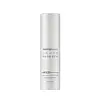What's inside
What's inside
 Key Ingredients
Key Ingredients

 Benefits
Benefits

 Concerns
Concerns

 Ingredients Side-by-side
Ingredients Side-by-side

Helianthus Annuus Seed Oil
EmollientOlea Europaea Fruit Oil
MaskingBeeswax
Emulsion StabilisingCocos Nucifera Oil
MaskingButyrospermum Parkii Butter
Skin ConditioningArgania Spinosa Kernel Oil
EmollientSimmondsia Chinensis Seed Oil
EmollientAnthemis Nobilis Flower Oil
MaskingCalophyllum Inophyllum Seed Oil
AntimicrobialRosa Rubiginosa Seed Oil
EmollientGlycine Soja Oil
EmollientCalendula Officinalis Flower Extract
MaskingTocopherol
AntioxidantKaolin
AbrasiveCI 77491
Cosmetic ColorantHelianthus Annuus Seed Oil, Olea Europaea Fruit Oil, Beeswax, Cocos Nucifera Oil, Butyrospermum Parkii Butter, Argania Spinosa Kernel Oil, Simmondsia Chinensis Seed Oil, Anthemis Nobilis Flower Oil, Calophyllum Inophyllum Seed Oil, Rosa Rubiginosa Seed Oil, Glycine Soja Oil, Calendula Officinalis Flower Extract, Tocopherol, Kaolin, CI 77491
Water
Skin ConditioningDibutyl Adipate
EmollientSynthetic Wax
AbrasiveCaprylic/Capric Triglyceride
MaskingHelianthus Annuus Seed Oil
EmollientPolyglyceryl-2 Triisostearate
EmulsifyingButylene Glycol
HumectantVinyldimethicone
Octyldodecanol
EmollientTocopheryl Acetate
AntioxidantOzokerite
Emulsion StabilisingGlycerin
HumectantPolyethylene
AbrasiveVinyl Dimethicone/Methicone Silsesquioxane Crosspolymer
Polyglyceryl-4 Diisostearate/Polyhydroxystearate/Sebacate
EmulsifyingOryza Sativa Extract
AbsorbentStellaria Media Extract
Skin ConditioningCentella Asiatica Extract
CleansingCeramide NP
Skin ConditioningCeramide As
Skin ConditioningCeramide AP
Skin ConditioningCeramide Ns
Skin ConditioningCeramide EOP
Skin ConditioningCholesterol
EmollientLactobacillus Ferment
Skin ConditioningHydrogenated Lecithin
EmulsifyingOryza Sativa Bran Oil
EmollientSodium Chloride
MaskingMicrocrystalline Wax
Emulsion StabilisingBisabolol
MaskingLauryl Polyglyceryl-3 Polydimethylsiloxyethyl Dimethicone
Skin ConditioningPolyglyceryl-5 Polyricinoleate
EmulsifyingGlyceryl Caprylate
EmollientCaprylyl Glycol
Emollient1,2-Hexanediol
Skin ConditioningEthylhexylglycerin
Skin ConditioningStearalkonium Hectorite
Gel FormingPropylene Carbonate
SolventDipropylene Glycol
HumectantTocopherol
AntioxidantGlyceryl Stearate
EmollientWater, Dibutyl Adipate, Synthetic Wax, Caprylic/Capric Triglyceride, Helianthus Annuus Seed Oil, Polyglyceryl-2 Triisostearate, Butylene Glycol, Vinyldimethicone, Octyldodecanol, Tocopheryl Acetate, Ozokerite, Glycerin, Polyethylene, Vinyl Dimethicone/Methicone Silsesquioxane Crosspolymer, Polyglyceryl-4 Diisostearate/Polyhydroxystearate/Sebacate, Oryza Sativa Extract, Stellaria Media Extract, Centella Asiatica Extract, Ceramide NP, Ceramide As, Ceramide AP, Ceramide Ns, Ceramide EOP, Cholesterol, Lactobacillus Ferment, Hydrogenated Lecithin, Oryza Sativa Bran Oil, Sodium Chloride, Microcrystalline Wax, Bisabolol, Lauryl Polyglyceryl-3 Polydimethylsiloxyethyl Dimethicone, Polyglyceryl-5 Polyricinoleate, Glyceryl Caprylate, Caprylyl Glycol, 1,2-Hexanediol, Ethylhexylglycerin, Stearalkonium Hectorite, Propylene Carbonate, Dipropylene Glycol, Tocopherol, Glyceryl Stearate
Ingredients Explained
These ingredients are found in both products.
Ingredients higher up in an ingredient list are typically present in a larger amount.
Helianthus Annuus Seed Oil is the oil derived from the seeds of a Sunflower. Sunflower seed oil is non-fragrant. It is an emollient, meaning it helps to soften the skin.
Sunflower seed oil contains many fatty acids. The fatty acids found in sunflower seeds include (from highest amount to least): linoleic acid, myristic acid, palmitic acid, stearic acid, arachidic acid, oleic acid, and linolenic acid.
These fatty acids help the skin create ceramides. Ceramides play a role in repairing the skin barrier.
Helianthus Annuus Seed Oil helps moisturize the skin. This in turn helps the skin look more rejuvenated and smoother.
Sunflowers are rich in vitamin E.
Historians believe Indigenous cultures of North America domesticated sunflowers before corn. Thus they relied on sunflower oil for a variety of uses. One such use is moisturizing skin and hair.
Sunflower seed oil may not be fungal acne safe. We recommend speaking with a professional if you have any concerns.
Learn more about Helianthus Annuus Seed OilTocopherol (also known as Vitamin E) is a common antioxidant used to help protect the skin from free-radicals and strengthen the skin barrier. It's also fat soluble - this means our skin is great at absorbing it.
Vitamin E also helps keep your natural skin lipids healthy. Your lipid skin barrier naturally consists of lipids, ceramides, and fatty acids. Vitamin E offers extra protection for your skin’s lipid barrier, keeping your skin healthy and nourished.
Another benefit is a bit of UV protection. Vitamin E helps reduce the damage caused by UVB rays. (It should not replace your sunscreen). Combining it with Vitamin C can decrease sunburned cells and hyperpigmentation after UV exposure.
You might have noticed Vitamin E + C often paired together. This is because it is great at stabilizing Vitamin C. Using the two together helps increase the effectiveness of both ingredients.
There are often claims that Vitamin E can reduce/prevent scarring, but these claims haven't been confirmed by scientific research.
Learn more about Tocopherol